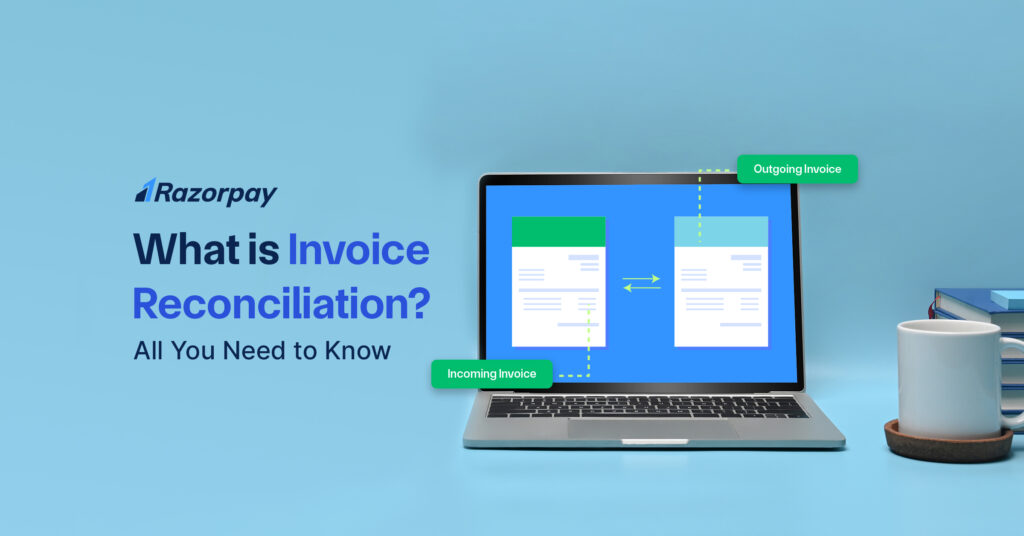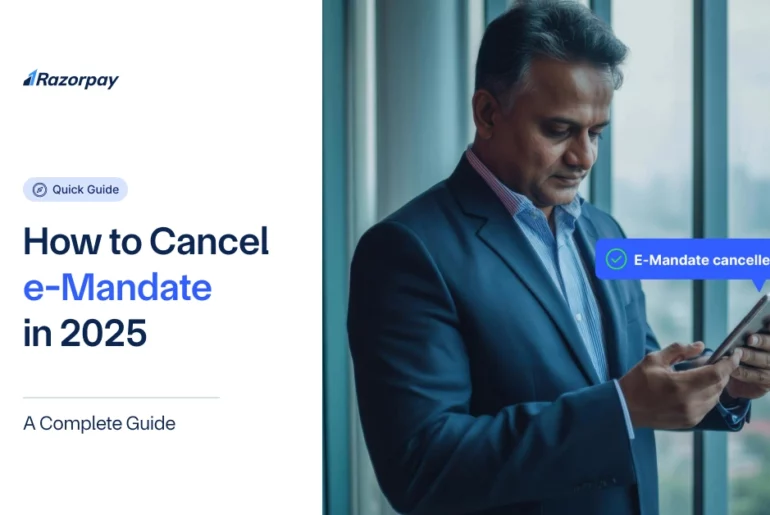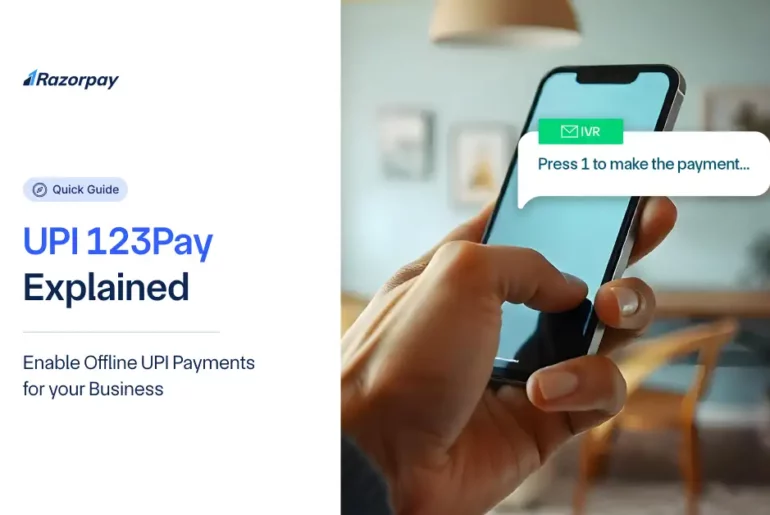Invoice reconciliation is a crucial process for maintaining financial accuracy, preventing fraud, and enabling better decision-making in businesses of all sizes.
This article explores the concept of invoice reconciliation, its various types, and the significant benefits it offers to businesses and financial professionals.
Read More About: What is an Invoice and their Elements, Formats and Templates
Table of Contents
What is Invoice Reconciliation?
Invoice reconciliation is an accounting process that compares and verifies invoices against other financial records, such as purchase orders or bank statements, to ensure accuracy and consistency in financial data.
This essential accounting practice allows you to ensure the accuracy and completeness of your financial transactions. It involves matching invoice details with corresponding records to identify and resolve any discrepancies, ensuring that all payments are correct and accounted for.
Read About: Difference Between Purchase Order Vs Invoice
Example of Invoice Reconciliation
A mid-sized electronics retailer receives an invoice from their main supplier for ₹24,00,000 for a recent shipment of laptops.
To reconcile:
STEP 1: The accounts payable team checks the invoice details.
STEP 2: They compare the invoice against the original purchase order.
STEP 3: The team reviews the goods received in the note.
STEP 4: They verify the quantity and pricing of laptops.
They found a discrepancy—the invoice lists 50 laptops, but only 48 were received. The retailer will contact the supplier, who will confirm the error and issue a corrected invoice for ₹23,04,000.
This process ensures the retailer pays only for the 48 laptops received.
Types of Invoice Reconciliation
Different businesses employ various invoice reconciliation methods based on their needs, transaction volume, and available resources.
Here are the main types:
1. Two-Way Matching
This basic method involves comparing invoices with purchase orders. It’s ideal for small businesses or simple transactions.
For example, a local bakery might use two-way matching to confirm that the invoice amount for a flour delivery matches their original purchase order.
2. Three-Way Matching
Three-way matching is used by companies dealing with physical goods. This method involves the purchase order, receiving report, and invoice.
For example, a furniture retailer ensures the ordered chairs match the purchase order and receives a report before approving the invoice.
3. Four-Way Matching
Four-way matching is particularly beneficial where product quality is crucial. It involves matching the invoice, purchase order, receiving report, and product quality.
For example, a pharmaceutical company verifies all these elements before payment to ensure the products meet quality standards.
4. Automated Invoice Reconciliation
Automated invoice reconciliation is ideal for large retailers. Retailers use specialized software to match invoices with purchase orders and receive reports, increasing efficiency.
For example, a supermarket chain might use such software to handle numerous transactions seamlessly.
5. Manual Invoice Reconciliation
Manual invoice reconciliation suits businesses with fewer transactions or limited resources.
For example, a small art gallery manually checks invoices for art pieces purchased to ensure they match their records before payment.
Related Read: Automate Your Invoice with Razorpay
How to do Invoice Reconciliation?
Here’s the step by step process of invoice reconciliation.
STEP 1: Gathering Invoices and Purchase Orders
This involves collecting all relevant documents for the reconciliation period, including invoices, purchase orders, and any related contracts. For example, a manufacturing company might gather all supplier invoices and corresponding purchase orders for raw materials received in the past month.
STEP 2: Cross-checking Invoice Details
Here, you compare the details on invoices against purchase orders and contracts. Check for matching quantities, prices, and terms. For instance, ensure that the unit price on the invoice matches the agreed price in the purchase order.
STEP 3: Verifying Goods Received and Services Rendered
This involves confirming that the goods or services billed were actually received. Compare invoices with delivery notes or service completion reports. A construction company, for example, might verify that billed materials were delivered to the site as stated in the invoice.
STEP 4: Matching Payments with Invoices
Here, you align payments made with the corresponding invoices. Check your bank statements or payment records against the invoices to ensure all payments are accounted for. For instance, a retail business might find that they’ve made a payment of ₹5,00,000 to a supplier, but the corresponding invoice is only for ₹4,50,000, indicating a potential overpayment.
STEP 5: Resolving Discrepancies
When mismatches are found, they need to be investigated and resolved. This might involve contacting suppliers, reviewing internal records, or adjusting entries. For example, if an invoice shows a higher amount than agreed, you’d contact the supplier to request a corrected invoice.
STEP 6: Updating Financial Records
The final step is to update your financial records with the reconciled information. This ensures your books accurately reflect all transactions and resolutions. For example, if a discrepancy was found and resolved in Step 5, you might need to create a credit note in your accounting system to correct an overpayment of ₹50,000.
Benefits of Invoice Reconciliation
Invoice reconciliation is crucial for all businesses, influencing finances, operational efficiency, and strategic planning.
1. Ensures Accuracy in Financial Records
Invoice reconciliation ensures your financial statements are accurate, aiding in budgeting, forecasting, and strategic decision-making. You can maintain a true picture of your financial health by confirming that every transaction is accounted for.
2. Prevents Fraud and Discrepancies
Regular reconciliation helps identify and prevent fraudulent activities by detecting unauthorised charges and discrepancies. This vigilance protects your business from potential financial losses and security breaches.
3. Improves Cash Flow Management
Effective reconciliation prevents you from overpayments and unexpected liabilities, ensuring accurate financial records. This is crucial for businesses with tight margins, as it helps maintain liquidity, avoid unnecessary expenses, and make informed financial decisions, leading to better cash flow management and business stability.
4. Regulatory Compliance and Auditing
Maintaining accurate financial records through regular payment reconciliation is essential for regulatory compliance. It prepares businesses for external audits, helping them avoid potential fines and legal issues.
5. Enhance Vendor Relationships
Timely and accurate payments through effective reconciliation, strengthen relationships with suppliers. Reliable payments build trust, leading to better terms, discounts, and priority service, benefiting your business and ensuring smooth operations.
6. Supports Compliance and Audit Readiness
Beyond basic regulatory requirements, robust reconciliation practices ensure businesses are always prepared for audits. This readiness minimises disruptions during auditing periods and demonstrates financial integrity to stakeholders.
7. Reduces Operational Costs
Efficient reconciliation processes support data-driven decisions, particularly in managing inventory and operations. By accurately displaying purchases and payments, businesses can optimise stock levels, reduce waste, and streamline operations, leading to significant cost savings.
8. Customer Satisfaction
Accurate reconciliation contributes to correct pricing and inventory management, enhancing customer satisfaction. It prevents sudden price changes or stockouts, ensuring customers can always rely on your business for consistent service.
Best Practices for Invoice Reconciliation
Ensuring effective invoice reconciliation can significantly enhance your business’s financial health.
Here are some best practices to help you streamline the process:
1. Automate Where Possible
Leverage automated invoice processing tools to handle repetitive reconciliation tasks, reducing human errors and saving valuable time. Automated systems can seamlessly match invoices with purchase orders and receive reports.
2. Maintain Clear and Consistent Documentation
Keep thorough and organised records of all financial transactions. Consistent documentation simplifies the reconciliation process and ensures compliance during audits.
3. Regularly Reconcile Invoices
Conduct regular reconciliations to quickly identify and address discrepancies. Frequent checks prevent minor issues from becoming significant financial problems.
4. Implement a Standardized Process
Develop a standardized reconciliation procedure that all team members can follow. This ensures consistency, enhances reliability, and makes training new employees easier.
5. Train Your Team
Invest in comprehensive training for your team on the reconciliation process and the tools they will use. A well-trained team can handle reconciliations more efficiently and with fewer errors.
6. Use Three-Way Matching
Adopt three-way matching to verify that purchase orders, receiving reports, and invoices align. This practice helps prevent overpayments and ensures accuracy in financial records.
7. Leverage Technology and Software
Utilize specialized reconciliation software to improve accuracy and efficiency. These tools can manage large data volumes and provide real-time updates, streamlining the process.
8. Review and Update Policies Regularly
Periodically review and update your reconciliation policies to keep pace with changing business needs and regulatory requirements. Regular updates help maintain best practices and ensure compliance.
9. Monitor and Analyse Reconciliation Metrics
Track and analyse key performance indicators related to reconciliation to identify trends and areas for improvement. This data-driven approach helps optimise the reconciliation process over time.
Conclusion
Invoice reconciliation is a critical financial process that safeguards businesses against errors, fraud, and financial mismanagement. By implementing a robust reconciliation system, companies can ensure accuracy in their financial records, improve cash flow management, and make more informed business decisions. Ultimately, effective invoice reconciliation not only maintains financial integrity but also contributes to stronger vendor relationships and overall business growth.
Related Read: 4-Way Matching in Accounts Payable: Process, Importance, and Benefits
FAQs
1. What is the difference between invoice and invoice reconciliation?
An invoice details products/services and the amount due, whereas reconciliation compares invoices with purchase orders and delivery receipts that ensure accuracy.
2. What are the common challenges businesses face during invoice reconciliation?
Businesses often face challenges during invoice reconciliation, such as missing documents, discrepancies between invoices and purchase orders, and delays in receiving information.
3. How often should businesses perform invoice reconciliation?
Businesses should perform invoice reconciliation regularly, ideally monthly. This helps promptly identify and resolve discrepancies, maintain accurate financial records, and ensure timely payments.
4. How can invoice reconciliation improve vendor relationships?
Invoice reconciliation improves vendor relationships by ensuring timely and accurate payments. When you reconcile invoices regularly, it reduces the likelihood of payment disputes and fosters trust.
5. How does invoice reconciliation help in detecting and preventing fraud?
Invoice reconciliation helps detect and prevent fraud by ensuring that every invoice is matched with a valid purchase order and delivery receipt. This process identifies any discrepancies or unusual transactions that might indicate fraudulent activities.



